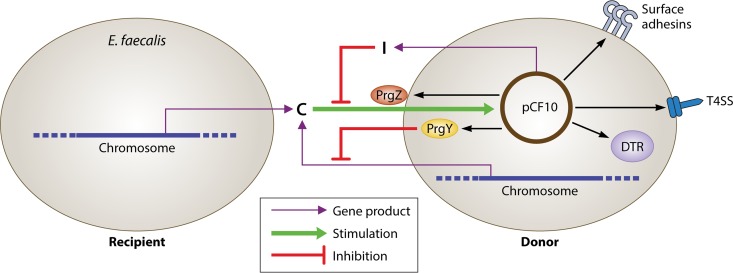FIG 1.
Diagram of the signaling circuits in the E. faecalis pCF10 conjugation system (adapted from Annual Review of Genetics [19]). Recipient and donor have similar chromosomes, but the donor also carries pCF10. The plasmid confers a response to the chromosomally encoded peptide C, which induces conjugation. The plasmid encodes the antagonistic peptide I, which inhibits C competitively. Two constitutively expressed pCF10 gene products, PrgZ and PrgY, function in pheromone import and in reduction of the amount of active C excreted by plasmid-carrying cells, respectively, as detailed in the text. Imported C interacts with PrgX (not shown) in the cytoplasm to induce a conjugation response. Pheromone induction of donor cells results in the synthesis of conjugation-related gene products, including surface adhesin proteins, type 4 secretion proteins (T4SS), and DNA transfer proteins (DTR).

